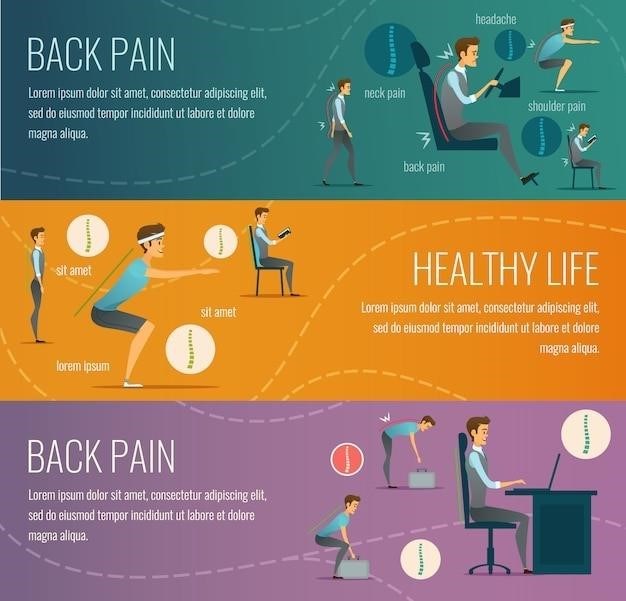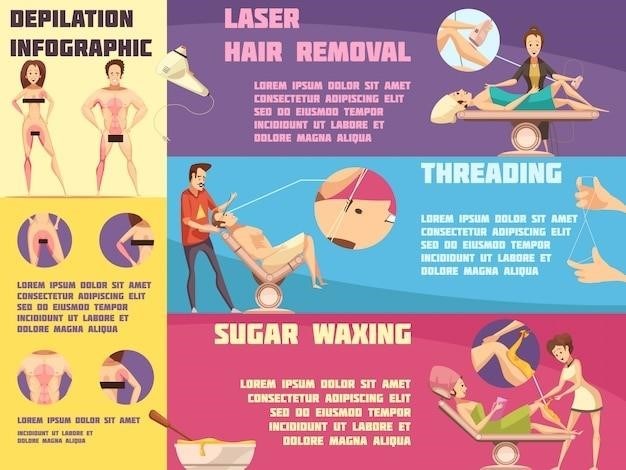Understanding Muscle Tension Dysphonia (MTD)
Muscle tension dysphonia (MTD) is a voice disorder stemming from excessive muscle tension in the larynx and surrounding areas. This tension interferes with vocal fold vibration, leading to voice quality changes like hoarseness and strain. Various exercises aim to alleviate this tension and improve vocal function.
Definition and Symptoms of MTD
Muscle tension dysphonia (MTD) is a common voice disorder characterized by excessive muscle tension in the larynx and surrounding structures. This tension disrupts the normal vibration of the vocal folds, resulting in a variety of voice problems. Individuals with MTD may experience hoarseness, breathiness, vocal fatigue, strained or strangled voice quality, and pain or discomfort in the throat or neck. The symptoms can range from mild to severe, impacting daily communication and potentially affecting professional life, especially for those who rely heavily on their voices. Accurate diagnosis is crucial, often involving a combination of medical history review, voice assessment, and laryngeal examination (e.g., videostroboscopy) to rule out other underlying conditions. Early identification and intervention are key to effective management and improved vocal health.
Causes and Contributing Factors of MTD
The exact etiology of muscle tension dysphonia (MTD) remains incompletely understood, but it’s generally considered a functional voice disorder rather than a structural one. Several factors contribute to its development. Psychological stress and anxiety are frequently implicated, leading to increased muscle tension in the larynx. Improper vocal habits, such as excessive force or inappropriate breathing patterns during speech, can also play a significant role. Certain medical conditions, such as gastroesophageal reflux disease (GERD) and allergies, can indirectly contribute by causing throat irritation and inflammation. Furthermore, anatomical factors like structural abnormalities in the larynx or surrounding areas might predispose individuals to developing MTD. Underlying medical conditions should be investigated and addressed appropriately as part of a comprehensive treatment plan. Finally, occupational demands requiring prolonged or intense voice use can significantly increase the risk of MTD.
Treatment Approaches for MTD
Treatment for muscle tension dysphonia (MTD) typically involves a multifaceted approach combining various therapies. These often include physical therapy, speech therapy, and targeted vocal exercises to reduce laryngeal muscle tension and improve vocal function.
Role of Physical Therapy in MTD Treatment
Physical therapy plays a significant role in managing muscle tension dysphonia (MTD) by addressing the underlying muscle imbalances contributing to the disorder. A physical therapist will assess posture, breathing patterns, and muscle tension in the neck, shoulders, and jaw – areas that often impact vocal function. Treatment may involve manual therapy techniques like massage and mobilization to release tension in these muscles. Furthermore, physical therapists design and implement exercises to improve respiratory support for voice production, optimize posture for efficient vocalization, and enhance overall body mechanics to minimize strain on the vocal apparatus. The goal is to restore proper muscle function and coordination, reducing vocal strain and improving voice quality.
Speech Therapy and Vocal Exercises for MTD
Speech therapy is a cornerstone of MTD treatment, focusing on retraining vocal habits and improving vocal efficiency. Speech-language pathologists (SLPs) assess vocal function, identifying specific areas of tension and dysfunction. They then develop individualized treatment plans incorporating a variety of vocal exercises designed to reduce laryngeal muscle tension. These exercises often target breath support, improving airflow to optimize phonation. Techniques may include relaxation exercises to reduce overall tension, and exercises that improve resonance and vocal coordination. The SLP guides patients in proper vocal techniques, promoting efficient voice production with minimal effort. Regular practice of these exercises is crucial for long-term management and improvement of voice quality.

Effective Exercises for MTD Relief
Targeted exercises can significantly alleviate muscle tension dysphonia symptoms. These exercises focus on relaxing the muscles of the larynx and improving breath support for efficient voice production. Consistency is key for lasting relief.
Relaxation Techniques and Breathing Exercises
Managing stress and tension is crucial for MTD relief. Deep breathing exercises, such as diaphragmatic breathing, help engage the diaphragm and reduce reliance on accessory muscles for breathing, thereby lessening tension in the larynx. Progressive muscle relaxation, involving tensing and releasing various muscle groups, can also promote overall relaxation and reduce vocal strain. Mindfulness and meditation techniques can further assist in stress reduction, creating a calmer environment for vocal function. These techniques encourage a more balanced breathing pattern, reducing the strain on the vocal cords and improving voice quality. Incorporating regular relaxation practices can significantly improve management of MTD symptoms. Remember to consult with a speech-language pathologist or other healthcare professional for personalized guidance on suitable relaxation and breathing exercises for your specific needs and condition.
Humming Exercises and Lip Trills
Humming and lip trills are gentle yet effective exercises for reducing muscle tension around the larynx. Humming, particularly on a comfortable pitch, promotes a relaxed vocal tract and encourages airflow from the diaphragm, minimizing strain. The sustained sound of humming helps coordinate breathing and phonation, reducing the effort required for voice production. Lip trills, produced by buzzing the lips while exhaling, further facilitate a relaxed airflow and reduce laryngeal tension. These exercises are particularly beneficial for warming up the vocal cords before speaking or singing and for reducing tension during vocal use. The vibrational sensations from humming and lip trills can help to release tension and improve the overall coordination of the vocal mechanism. Consistent practice of these exercises, ideally under the guidance of a speech therapist, can lead to significant improvements in voice quality and reduce the symptoms of muscle tension dysphonia. Remember to maintain a relaxed posture and gentle breath support while performing these exercises.
Yawn-Sigh Technique and Other Vocal Exercises
The yawn-sigh technique is a valuable tool for releasing tension in the larynx and improving vocal function. Begin by taking a deep, natural yawn, feeling the stretch in your throat and jaw. Then, gently transition from the yawn into a prolonged, effortless sigh, allowing the breath to flow freely. This helps to relax the muscles of the pharynx and larynx. Other beneficial exercises include gentle stretching of the neck and jaw muscles, which are often implicated in muscle tension dysphonia. These stretches can help to improve posture and reduce tension in the surrounding areas. Practicing controlled breathing exercises, focusing on diaphragmatic breathing, can also aid in reducing vocal strain. These exercises promote efficient airflow, which is essential for healthy voice production. Additionally, exercises that focus on improving resonance by directing sound through the mask (the area of the face above the upper lip) can help reduce laryngeal tension. Remember to perform these exercises slowly and gently, paying attention to your body’s response. Consistency is key to achieving lasting results. Consult a speech-language pathologist for personalized guidance and exercise selection.

Additional Therapies and Considerations
Beyond exercises, manual therapy, such as massage, can help release muscle tension. Resonant voice therapy focuses on improving vocal efficiency and reducing strain. A holistic approach, combining these methods, often yields the best results.
Resonant Voice Therapy for MTD
Resonant voice therapy (RVT) is a valuable approach for managing muscle tension dysphonia (MTD). It focuses on optimizing the three physiological subsystems of voice production⁚ respiration, phonation, and resonance. RVT aims to achieve a strong, clear voice with minimal effort, thereby reducing strain on the vocal muscles. The therapist guides the patient in exercises that promote efficient breathing patterns, proper vocal fold closure, and optimal resonance in the vocal tract. These exercises often involve manipulating airflow and vocal tract adjustments to achieve a more resonant and less strained voice. This approach is particularly helpful in addressing the underlying muscle tension contributing to MTD. The techniques used in RVT are often incorporated into a comprehensive treatment plan alongside other therapies and exercises for MTD.
Manual Therapy and Massage Techniques
Manual therapy, including massage, plays a significant role in treating muscle tension dysphonia (MTD). These techniques directly address the excessive muscle tension in the larynx and surrounding areas, contributing to vocal difficulties. A skilled therapist uses gentle, precise manipulations to release tension in the neck, jaw, and throat muscles. This can include myofascial release, which targets the connective tissue surrounding muscles, and trigger point therapy, focusing on specific points of heightened muscle tension. The goal is to improve muscle flexibility, reduce pain, and facilitate more efficient movement of the laryngeal muscles during phonation. Manual therapy is often combined with other treatments like voice therapy and exercises for optimal results. It’s crucial to find a therapist experienced in treating voice disorders to ensure safe and effective treatment.